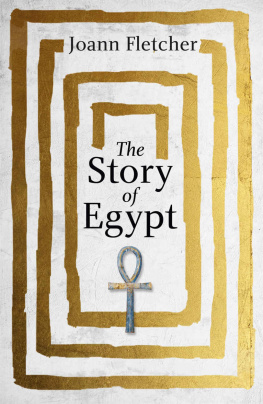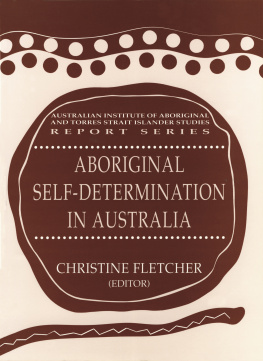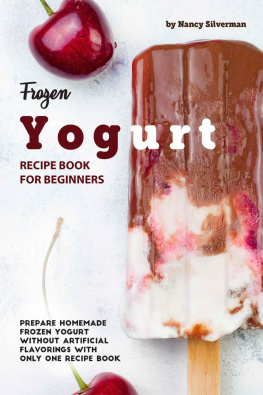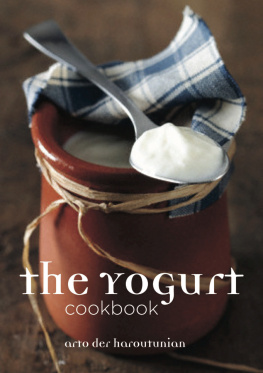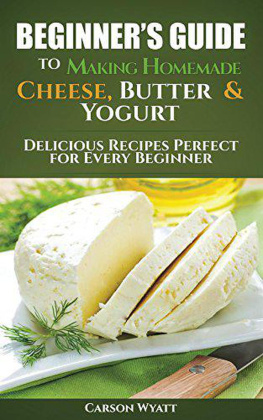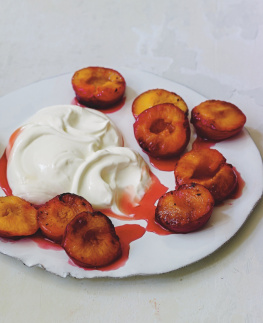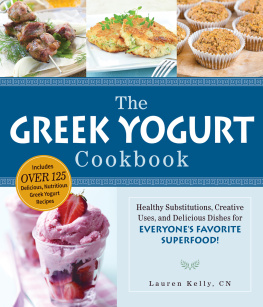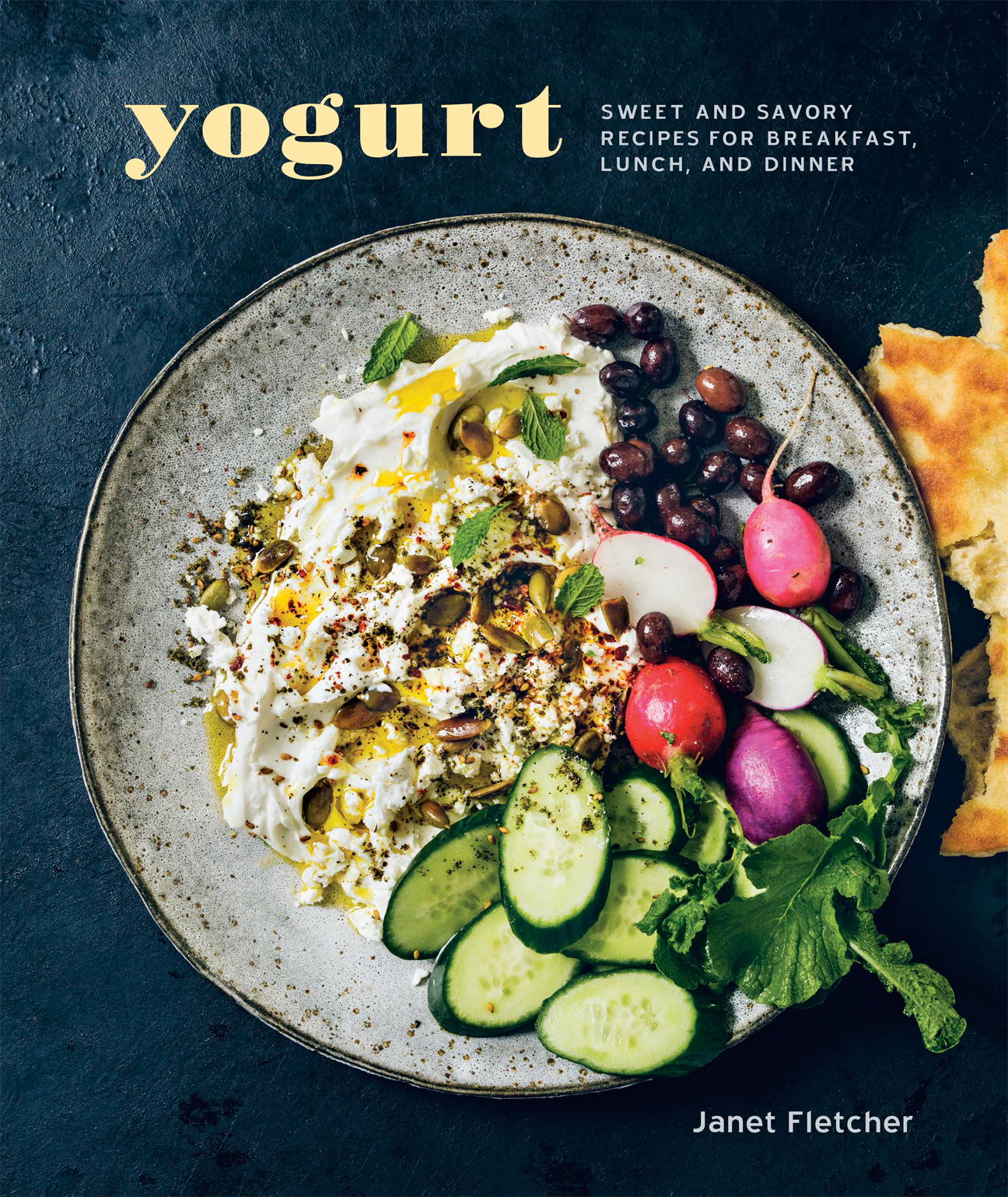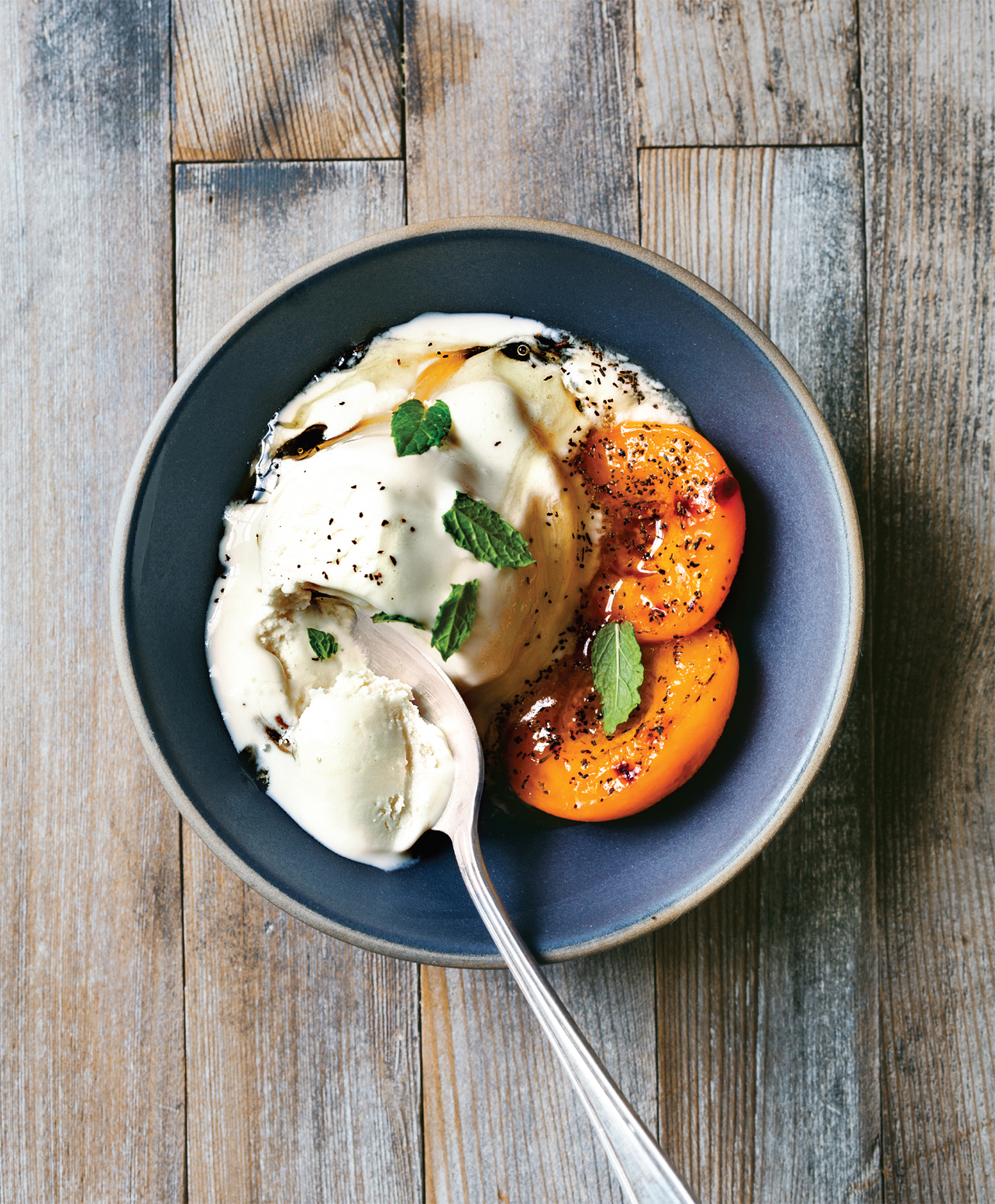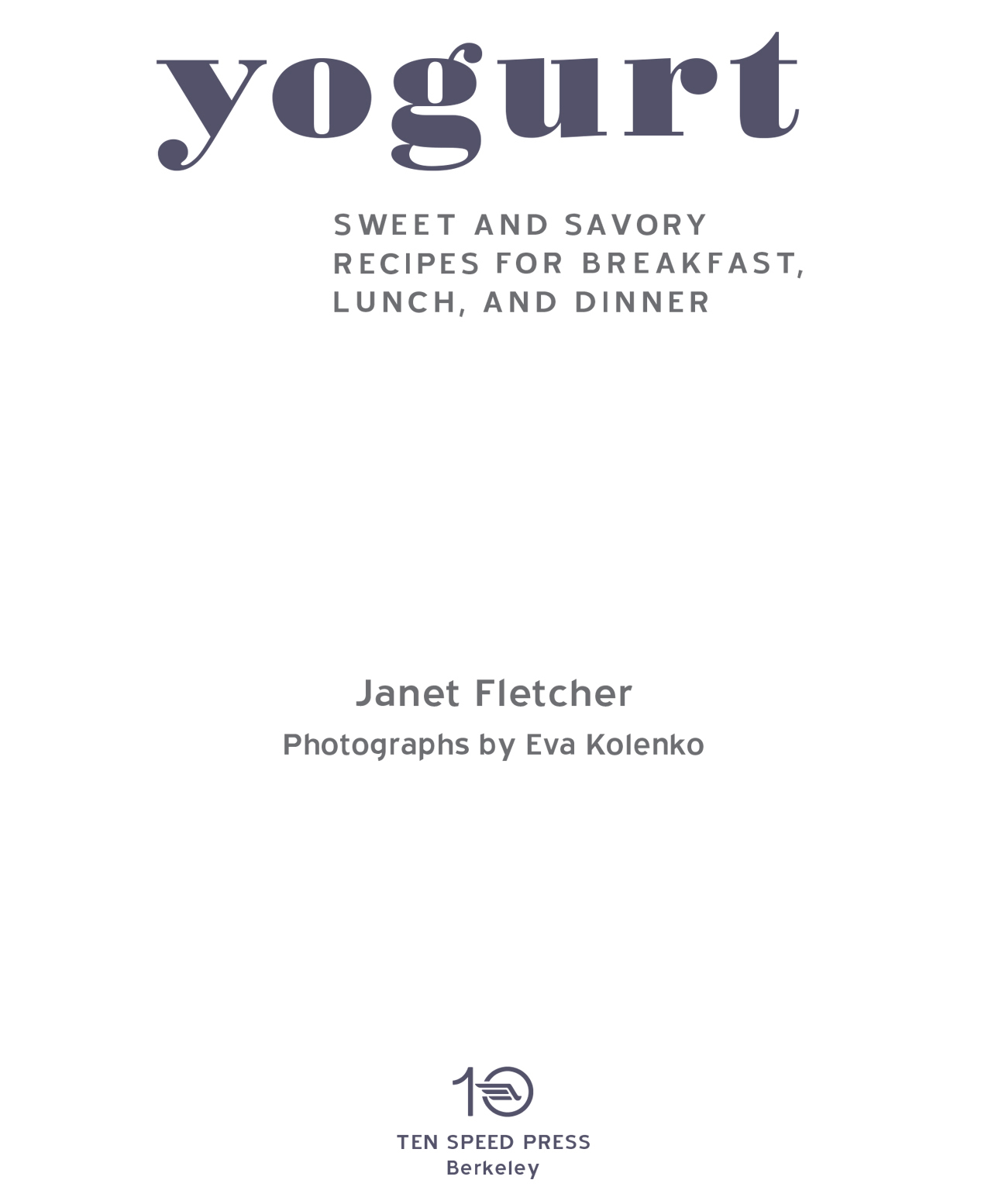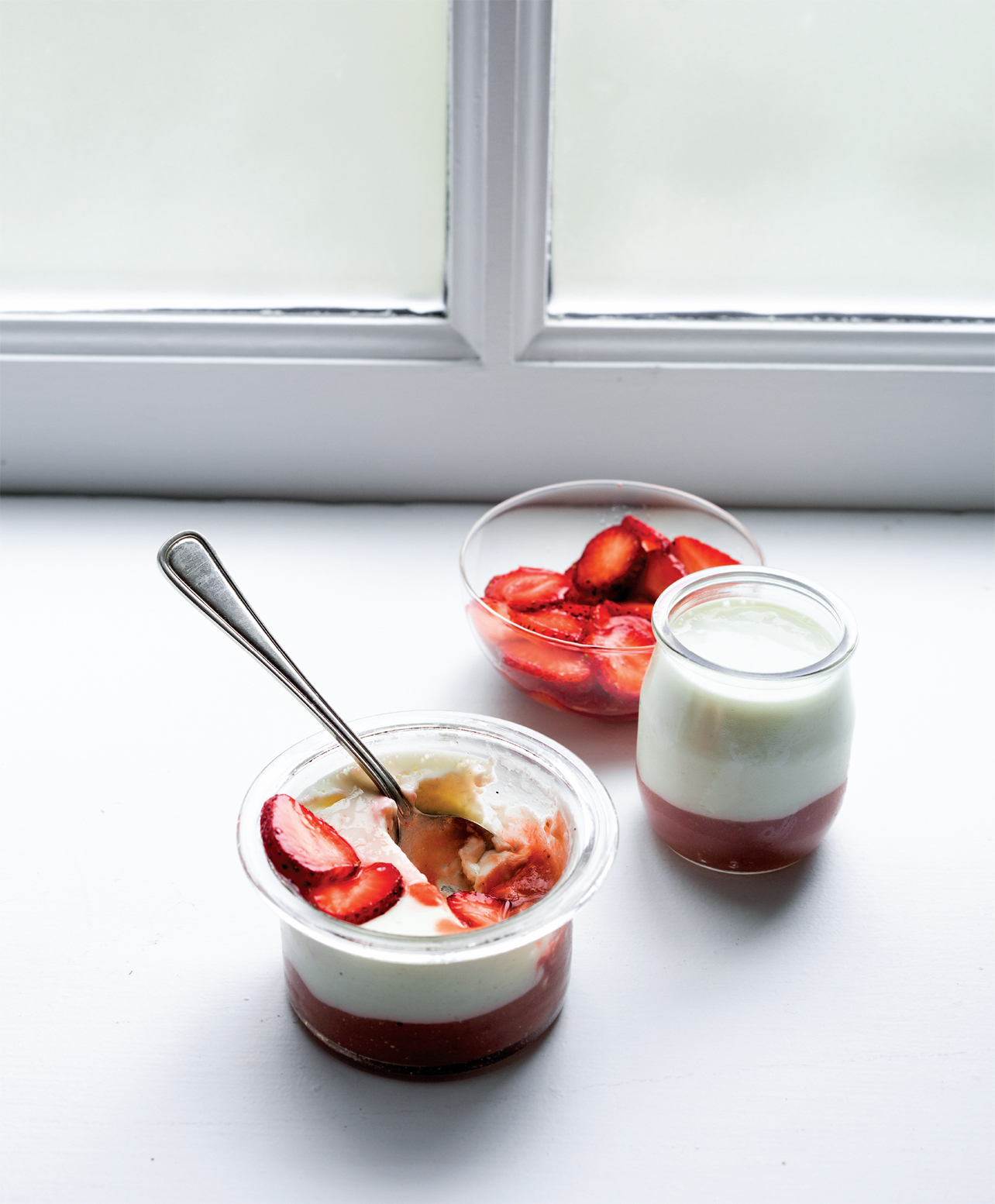
Americans have fallen in love with yogurt, thanks to its creamy texture, tangy flavor, and health-promoting probiotic cultures. In Yogurt , a fresh and modern full-color cookbook, author Janet Fletcher demonstrates the versatility of this dairy superstar in more than fifty recipes for appetizers, salads, soups, beverages, and desserts. From roasted tomato bruschetta with yogurt cheese to meatballs in a warm yogurt sauce to a golden yogurt cake, these recipes showcase yogurt in dishes both rustic and sophisticated. Drawing inspiration from the culinary traditions of Greece, Turkey, Lebanon, Syria, Iran, India, and beyond, this useful handbook includes a guide to purchasing yogurt (all of the recipes work with quality store-bought brands), advice on choosing a yogurt maker, and easy methods for making yogurt, Greek yogurt, and yogurt cheese at home.

Copyright 2015 by Janet Fletcher
Photographs copyright 2015 by Eva Kolenko
All rights reserved.
Published in the United States by Ten Speed Press, an imprint of the Crown Publishing Group, a division of Random House LLC, a Penguin Random House Company, New York.
www.crownpublishing.com
www.tenspeed.com
Ten Speed Press and the Ten Speed Press colophon are registered trademarks of Penguin Random House LLC.
Library of Congress Cataloging-in-Publication Data
Fletcher, Janet, 1956- author.
Yogurt : sweet and savory recipes for breakfast, lunch, and dinner / Janet Fletcher. First edition.
pages cm
1. Cooking (Yogurt) I. Title.
TX759.5.Y63F54 2015
641.671476dc23
eBook ISBN: 978-1-60774-713-0
Hardcover ISBN: 978-1-60774-712-3
Hardcover Design by Nami Kurita
Food styling by George Dolese
v3.1
Drizzled with honey or dolloped on fruit, yogurt is a gift from nature. We humans have refined the recipe, but nature created it and showed us the way. Thousands of years agowho knows when?some herder in Central Asia probably left an animal-skin pouch of goats milk in the sun and came back to find the milk thickened and sour. It tasted pleasant (we have to presume), it lasted longer than fresh milk, and it was more digestible. Eventually, some resourceful goatherds realized they didnt have to wait for nature to intervene: they could instigate the milks transformation themselves. A little yogurt stirred into fresh milk would produce more yogurt.
Thick and creamy, wholesome and health-promoting, yogurt nourishes us from daybreak to bedtime. A bowl of yogurt, peaches, and granola to start the day an asparagus frittata with yogurt at lunch lamb meatballs in a spicy yogurt sauce for dinner. Yogurt tantalizes us with its possibilities, with all the directions it can go. Sweet or savory? In a strawberry smoothie or stirred into soup? With blueberries and maple syrup or with cucumbers, walnuts, and mint?
As a cook, I love where yogurt has taken me. It has sent me diving into Indian cookbooks to learn more about raitas, the spicy yogurt salads fragrant with mustard seed and cumin. Ive explored Turkeyon the ground and in booksand fallen in love with its yogurt salads, similar to raitas but totally different in seasoning. Garlic, dill, and mint are the Turkish signature, ever-present in these salads and in Turkeys aromatic, yogurt-thickened soups. Friends from India, Turkey, Greece, and Lebanon have introduced me to other traditional yogurt dishes: charcoal-grilled souvlaki on a bed of yogurt with homemade flatbread; braised lamb shoulder with artichokes and yogurt; variations on Greeces cucumber tzatziki; and the seductive shrikhand , an Indian yogurt dessert scented with cardamom and saffron. Ive also been influenced by the contemporary, stylish suggestions for enjoying fresh yogurt proposed by American yogurt producers.
At some point, as enthusiastic cooks always do, I began to develop my own ways of using yogurt that reflect my taste and California sensibilities. Ive never cared much for contemporary fusion food, the sort of cooking that ignores traditional foodways and the flavor combinations that have evolved over centuries. But Im all in favor of building on tradition and using familiar dishes as a bridge to new taste experiences. An Indian cook might never pair a .

Yogurt has nourished civilizations since perhaps 5000 BCE. Food historians surmise that it originated in Central Asia, almost surely by happenstance when ambient strains of Lactobacillus delbrueckii subspecies bulgaricus and Streptococcus thermophilus thickened and soured fresh milk. These bacteria will ferment any mammals milkcow, goat, sheep, camel, yak, mare, water buffaloso yogurt would have been of tremendous nutritional value to early pastoral peoples. Fresh milk, which might spoil in hot climates in just a few hours, could safely nourish people for days if encouraged to acidify into yogurt. By producing lactic acid and lowering the milks pH, the good bacteria in yogurt make life difficult for spoilage bacteria and pathogens. Drained and salted, yogurt lasts even longer, as the ancients surely discovered.
From Central Asia, yogurt likely passed into present-day Iran, then west to Turkey and the Balkans, east to Afghanistan, and south to Pakistan and India. A line drawn from Belgrade to Baghdad to Bangalore would loosely trace the arc of yogurt eaters before recent times. The Bible refers to Abraham serving curds and milk to guests. Was that yogurt? Pliny the Elder wrote about nomadic tribes that knew how to thicken milk into a pleasantly acidic curd. Was that yogurt? According to food historian Clifford Wright, the first written description of what was unequivocally yogurt appears in an eleventh-century dictionary compiled during the Seljuk reign in the Middle East.
The English word yogurt is Turkish in origin, and etymologists believe the Turkish word derives from the root yog , meaning to condense or thicken. The Turks helped spread yogurt to western Europe, but it was a Russian microbiologist, Ilya Mechnikov, who really sparked todays widespread enthusiasm for yogurt.
The 1908 Nobel Prize winner in medicine, Mechnikov became intrigued by the long lives of Bulgarians and thought their high yogurt consumption might play a role. During his years at the Pasteur Institute in Paris, he developed a theory that lactic acid bacteria in the gut could help prolong life by combating toxic bacteriaa notion that underlies probiotics research today. Mechnikov surmised that we could, through diet, modify our intestinal flora, replacing harmful microbes with beneficial ones.




